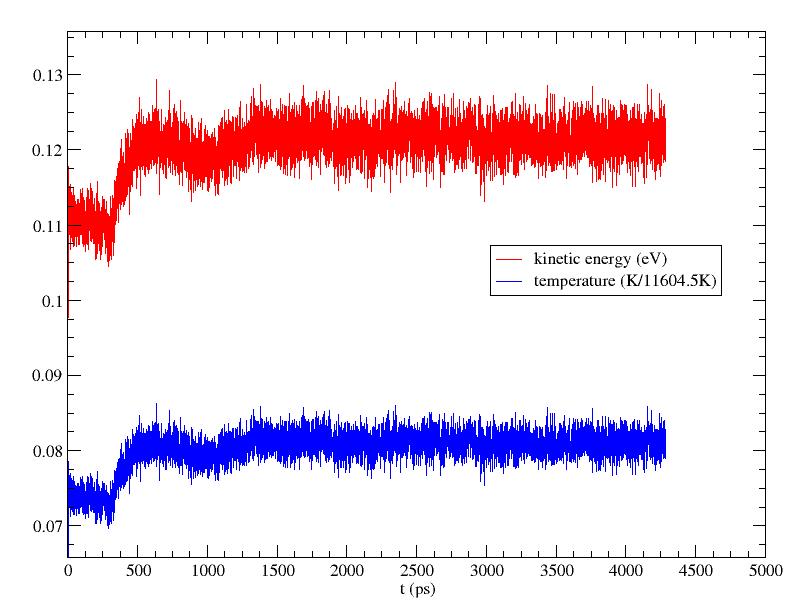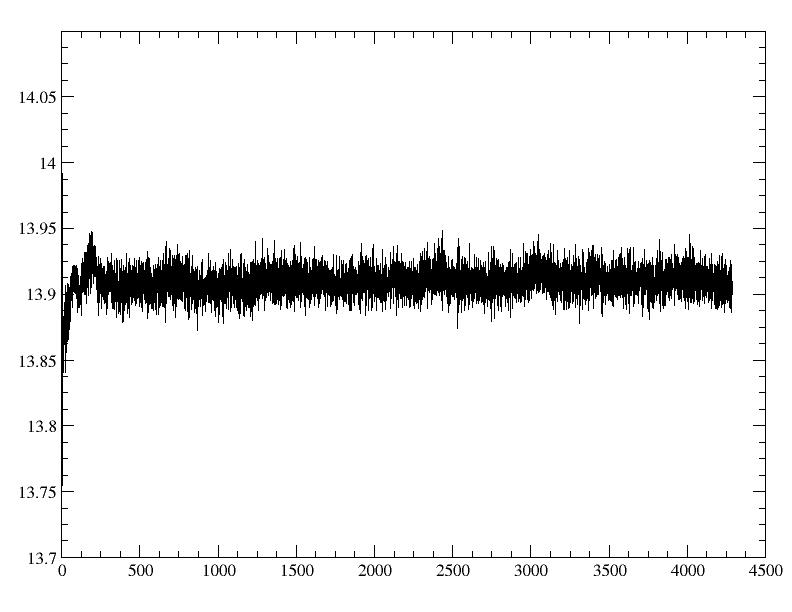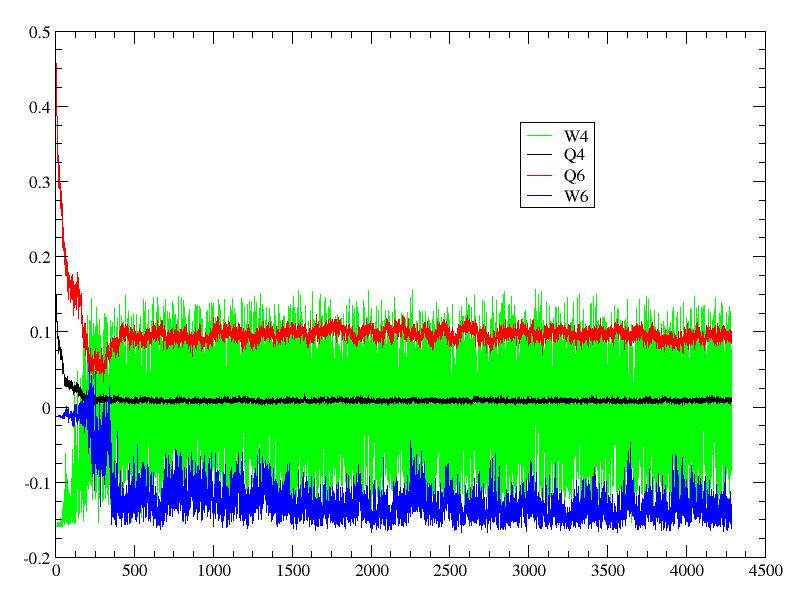
First I let the gold nanosphere go through a constant temperature MD at 5K to allow the surface to relax. After that, I did the constant temperature MD at 1150K for 10 steps, so that the system temperature can be increased artificially to be very high but the internal structure won't be changed. Because later the system will absorb some kinetic energy to be potential energy, I set a higher temperature of 1150K so that later the temperature can be lowered to be around desired 950K.
The system temperature first lowered to about 800K then higher again to more than 900K. Finally it fluctuated around 940K (More accurate value should be checked by averaging the temperature data). The internal structure changed quickly from fcc to icosahedral. This shows that icosahedral is preferred structure for the gold nanosheres at high temperature just below melting. This result is coincident with C. L. Cleveland, W. D. Luedtke and Uzi Landman, Phys. Rev. B 60, 5065 (1999).
However, there are no icosahedral local structures appeared in the heating of gold nanorod. There are three possible explanations for this contradiction:
1) The difference of the size. The gold nanorod we analyzed is 2624 atoms, larger than this one. To verify it, we can do the same simulation for a gold nanoshpere with about 2624 atoms to see if it can be stable with fcc/hcp structure at high temperature just below melting.
2) The simulation of continuous heating is a non-equilibrium procedure so that the configurations saved from it may not be stable. It may change to icosahedral is it is relaxed by constant energy simulation. However, there is one intermediate state configuration of the rod with 2624 atoms that can be stable for 430 ps without changing its initial fcc/hcp structure.
3) The stability of the internal structure is closely related to both the temperature and the shape. In the case of gold nanorods, the intermediate state is a wider rod but not shpere which can have fcc/hcp internal structure.
1. Kinetic energy and temperature vs. time with fixed total energy

2. Radius of gyration (Mean distance of atoms to center of mass) vs. time

3. Bond order paramters for internal atoms
